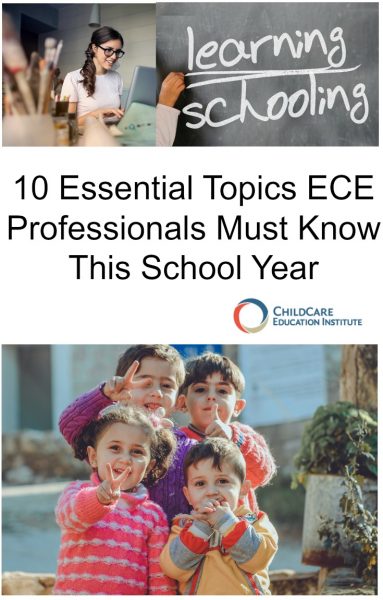Mindfulness in the early childhood environment has been given its due attention recently as we come to understand more about how mindfulness benefits all young children. Mindfulness practices have been around for centuries, but integrating mindfulness into early childhood environments can empower our youth with crucial tools. According to ChildCare Education Institute, the industry leader for online professional development, guiding our children at home, in childcare, or in the classroom to practice mindfulness can help children develop self-regulation skills, increased attention spans, encourage well-being and resilience, and promote kindness and compassion for self and others in the world.
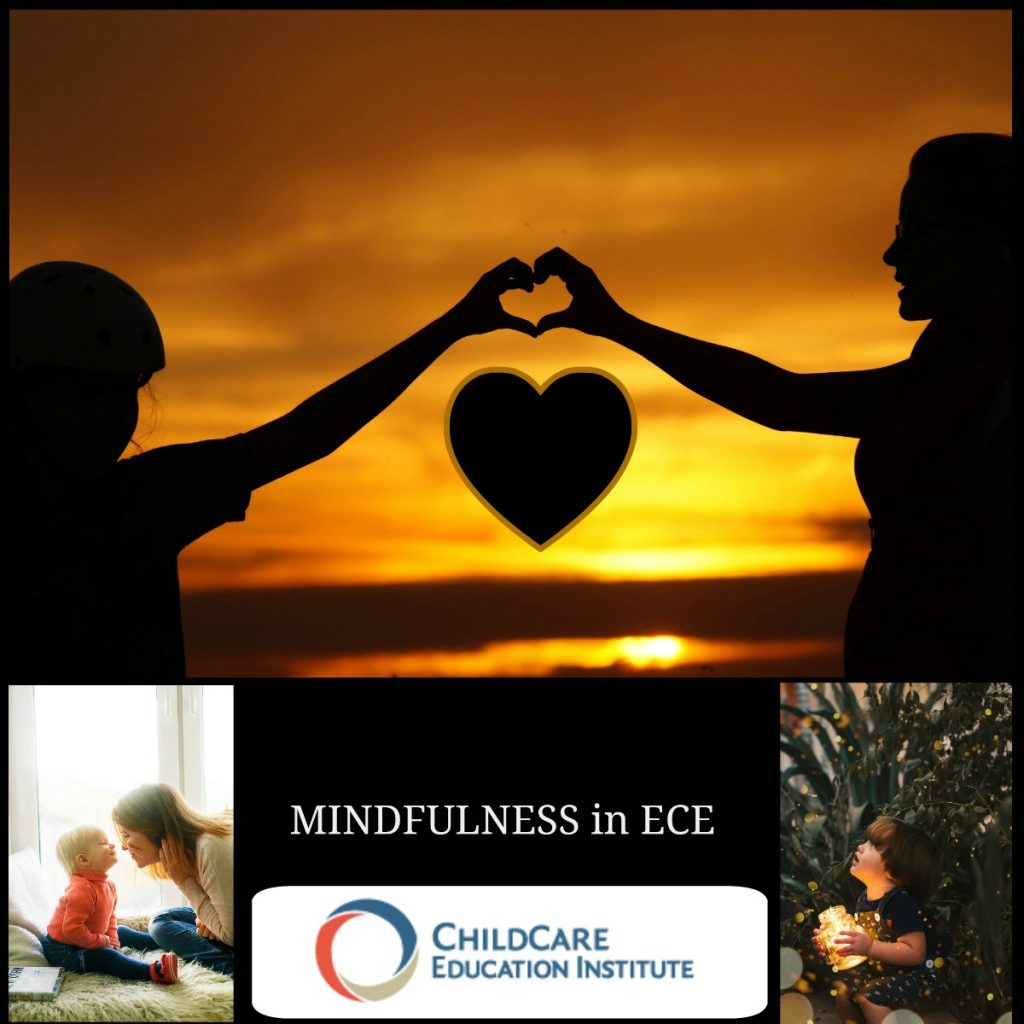
Mindfulness in the Early Childhood Environment
Disclosure: this post and others within the blog contain affiliate, distributor, and/or sponsored content and links. Please see our updated privacy policy for full disclosures and more information. The following is a sponsored article from ChildCare Education Institute – all opinions are my own.
As ECE professionals, we’ve heard the term mindfulness many times, but defining mindfulness can be a bit tricky. Mindfulness is a state of active, purposeful attention to the present. Integrating mindfulness into daily activities in all early childhood environments can help children with emotional awareness, self-regulation, resilience, and compassion for self and other adults or children. The mindfulness tools below, along with professional development for knowledge and insights into mindfulness from ChildCare Education Institute, will help all early learning professionals guide and support young children to mindfulness.
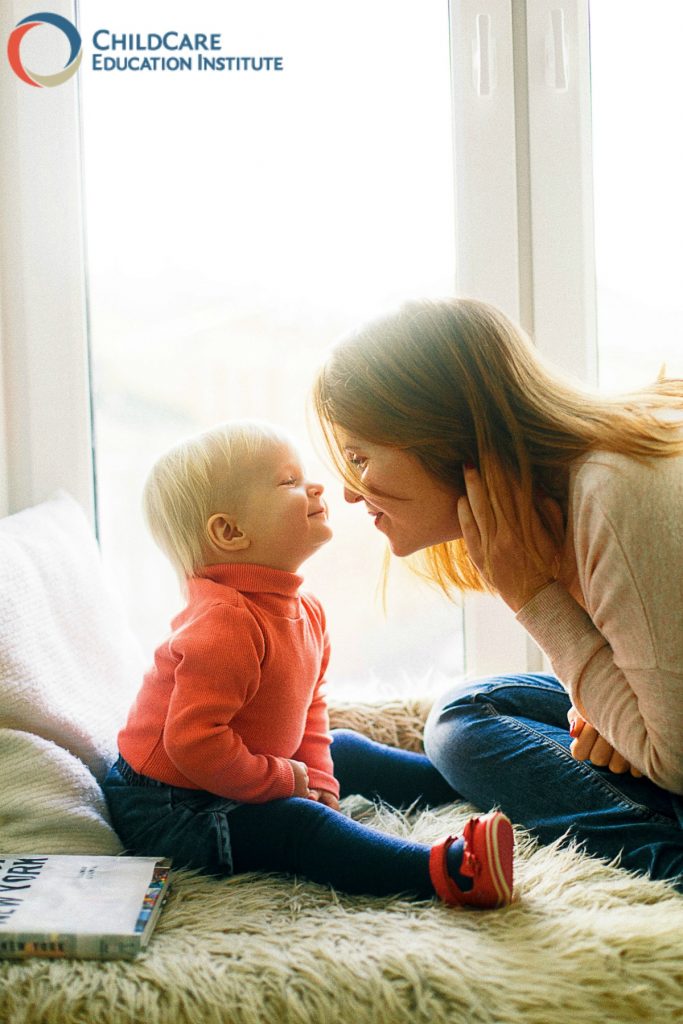
Tools for Practicing Mindfulness in the Early Childhood Environment
Using mindfulness tools in our early childhood environments isn’t expensive. Mindfulness tools are one of the least expensive ways we can support healthy relationships, whether it’s child-to-child relationships or adult-to-child relationships. The key is using mindfulness tools is consistently modeling mindfulness so it becomes second nature to the children in our care or classrooms. How can YOU support mindfulness with children in your own early childhood environments?
Gentle Breaths – children (and many adults) breathe shallowly when under stress or in times of frustration. Have you found that after a long day of teaching and caring for children your neck and shoulders carry the stress and ache? Ask children to place hands on their tummies. Gentle breaths mean taking in air through the nose, the tummy (technically, the diaphragm) expands so their hands can feel it, and then exhaling through the nose while silently counting to 5. It isn’t quite so simple without practice. Model gentle breaths throughout the day or during transition times. With daily practice, your own children will be able to STOP, BREATHE, CALM, and THINK better when stressed or frustrated. As an adult, just calling out “Gentle Breaths” once children have practiced consistently, will guide them to pause what they are doing and mindfully breathe.
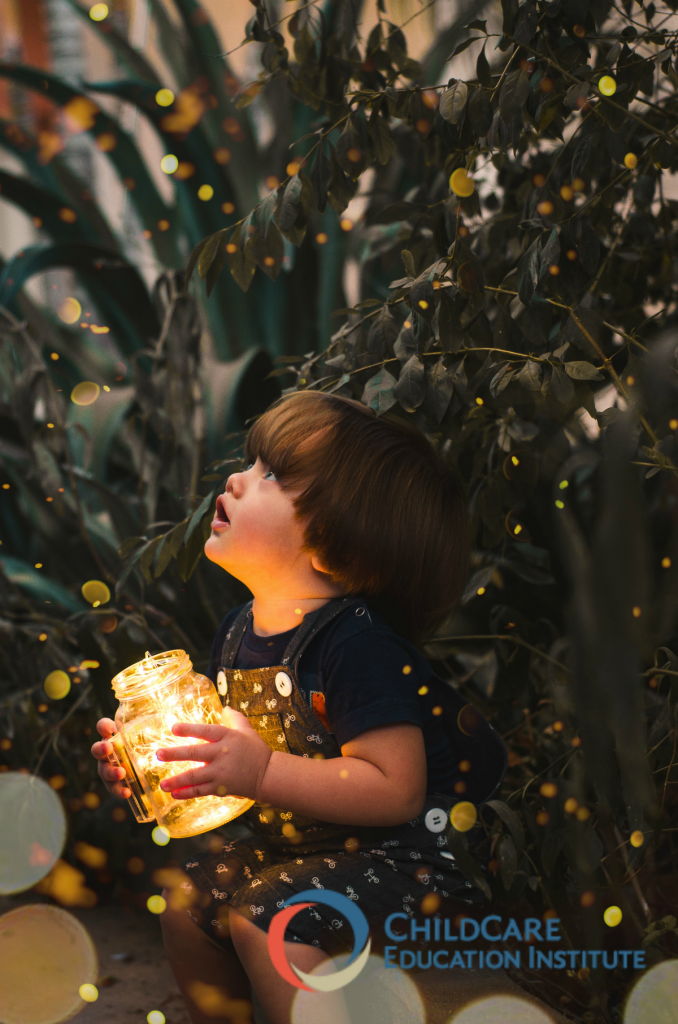
Glitter Jars – many early childhood professionals have sensory or “calm down” glitter jars in our classroom or homes. Using sensory jars for mindfulness involves some insights and asking appropriate questions. When a child is frustrated or stressed, ask the child to hold the glitter jar and look through the water without shaking the jar. The water remains calm until shaken. Ask the child to shake the glitter jar and note that the glitter swirls and floats much like thoughts and energy do in our bodies. When we stop shaking the glitter jar, the glitter then calmly settles at the bottom. The thoughts in our minds work sometimes like the glitter. They float around until we breathe, gentle breaths, and can put the thoughts or feelings into words or choose a picture to represent how we feel.
Purposeful Listening – there are many amazing free mobile apps with various sounds from Tibetan singing bowls to soothing nature sounds. Young children love to hear the different sounds and learn to discriminate between sounds as they practice listening. Pick a mobile app to try and begin with just three or four different sounds. As the children gain confidence, add more sounds for auditory discrimination and purposeful listening. By training their minds and bodies to listen with intent, children will naturally calm, engage in peaceful listening, and gain mindful awareness.
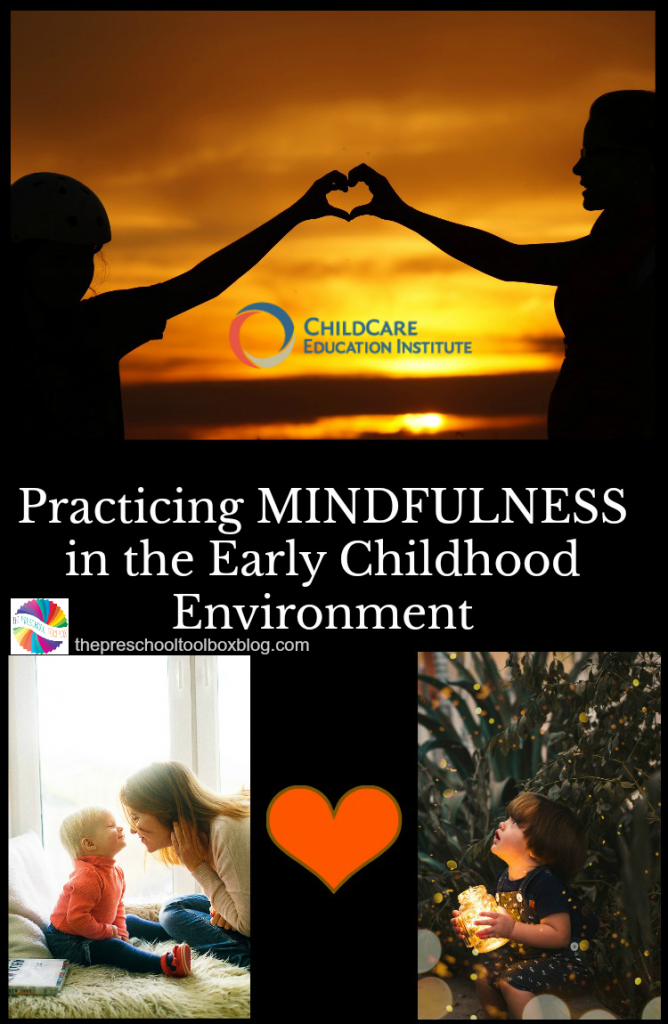
Professional Development for Supporting Mindfulness in the Early Childhood Environment
How can YOU learn more about supporting your own children toward mindfulness this school year? Mindfulness practices are critical tools to implement from the very beginning of the school year. Mindfulness practices can help children move toward self-regulation of behaviors, increase focus and engagement, and promote a feeling of ownership and empowerment for all children. When mindfulness is integrated into early childhood environments, a sense of community, empathy, and kindness ensues. ChildCare Education Institute’s course SOC106: The Value of Mindfulness in Early Childhood explores calming and reflective approaches that can be implemented immediately for a successful start to the school year. All early learning professionals will gain appropriate practices to positively guide all youth toward mindfulness whether at home, in childcare, or in the classroom. I highly recommend CCEI’s course on mindfulness so you can use what you learn in your own early childhood environment.
With ChildCare Education Institute’s courses, it’s easy to guide your own professional development and gain new credentials and tools for teaching and working with young children. Their platform offers guided videos, key question/answer components, and thorough (printable) hand-outs for each course. I’ve had the honor of personally taking courses from ChildCare Education Institute including GUI 102: Conflict Resolution in the Early Childhood Environment and SOC 109: Building Resilience in Young Children.The courses are easy to navigate, yet thorough in content. I’ve always gained insights and excellent tools I can implement immediately into our own early childhood environment. You can take SOC106: The Value of Mindfulness in Early Childhood entirely online through ChildCare Education Institute in the comfort of your own home or classroom and on your own time schedule – 24/7/365.
Why Should You Choose Online Professional Development through ChildCare Education Institute?
Teachers and caregivers are busy, especially this time of year. I love to attend seminars and professional development courses, but it isn’t always possible with the time constraints of the school year. With ChildCare Education Institute’s courses, you can gain IACET accredited continuing education units (CEUs) and professional development tools right from the comfort of your desk at school or at home. With over 5 million course hours completed by CCEI students, CCEI leads the industry in online professional development. ChildCare Education Institute’s courses have helped me gain insights and tools to help our own children flourish. Check out a FREE trial course today to see how ChildCare Education Institute can help you guide your own children to success all year long!

About CCEI:
ChildCare Education Institute provides high-quality, online training
courses and programs, applicable to those who work in an array of childcare
settings, including center-based care, Head Start, family childcare, Pre-K
classrooms, after-school environments, and more. Over 150 English and Spanish
training courses are available to meet licensing, recognition programs, or Head
Start requirements. ChildCare Education Institute also has online certification
programs that the coursework requirement for national credentials including the
CDA, Director and Early Childhood Credentials. CCEI, a Council for Professional
Recognition CDA Gold Standard training provider, is nationally accredited by
the Distance Education Accrediting Commission (DEAC) and is accredited as an
Authorized Provider by the International Association for Continuing Education
and Training (IACET).
- 99 percent of students
say they would recommend ChildCare Education Institute to others - Over 5 million online
course hours completed - Graduated over 15,645 early childhood professionals from CDA and
other certificate programs - Web-based coursework
is available 24/7/365 - IACET CEU’s awarded
for completed coursework at no additional cost
